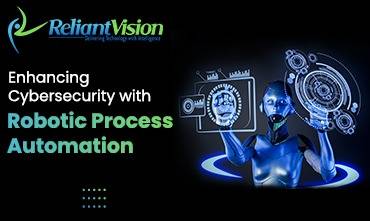In today’s digital landscape, cybersecurity has become a critical concern for organizations across various industries. With the growing sophistication of cyber threats, it is imperative for businesses to adopt innovative solutions to safeguard their sensitive data and infrastructure. One such solution that has gained significant traction is Robotic Process Automation (RPA). In this blog post, we will explore the role of RPA in cybersecurity and its potential to enhance security risk management.
Understanding Robotic Process Automation:
Robotic Process Automation refers to the use of software robots or “bots” to automate repetitive and rule-based tasks within business processes. These bots are capable of mimicking human actions, interacting with various software systems, and performing tasks with speed and accuracy. RPA has primarily been associated with streamlining business operations and increasing efficiency. However, its capabilities extend beyond process automation, making it a valuable tool in the realm of cybersecurity.
Why Use Automation for Cybersecurity?
Organizations are putting more and more focus on their digital change efforts, which is making their businesses more complicated technically. This changes the way companies do their job, how they stay competitive, how they deal with their users, and how efficient they are as a whole. Increasing organizational complexity can pose a big risk if cybersecurity can’t keep up with the changing environment and protect, watch, and react to threats in the right way.
As companies move forward with different digital transformation projects, it is important to remember that these projects increase the general attack area from the point of view of corporate spying.
Many organizations carefully check their systems and data for strange behavior and signs of a breach or flaw.
In a modern company, this is a lost bet, and safety technology can help fix it. Automation can also help with cybersecurity teams that are too small or don’t have the right number of people for the organization’s growing digital impact. When you add in human mistakes and the huge amount of data that needs to be managed, it is likely that a possible threat will be missed. It’s just not reasonable to think that human teams can consistently catch possible hacking events. Automation could be a must-have if you want to protect your company consistently and make sure it is resilient by using strong, repeatable processes.
RPA and Security Risk Management:
Managing security risks effectively is a top priority for organizations seeking to protect their assets and maintain customer trust. Here’s how RPA can contribute to cybersecurity and risk management:
Improved Threat Detection and Response:
RPA can be programmed to monitor and analyze vast amounts of data in real time. By integrating with existing security systems and log files, RPA bots can identify anomalies, detect potential security breaches, and promptly alert security teams. Automated incident response workflows can also be implemented to mitigate threats and minimize response times, reducing the risk of data breaches or unauthorized access.
Enhanced Vulnerability Management:
Identifying and patching vulnerabilities is crucial to maintaining a secure IT infrastructure. RPA can assist in automating vulnerability scanning processes, ensuring continuous monitoring and assessment of potential weaknesses. Bots can automatically scan systems, applications, and networks, providing timely reports on vulnerabilities, and initiating remediation actions as per predefined protocols. This enables organizations to proactively address vulnerabilities and reduce the window of opportunity for attackers.
Strengthened Identity and Access Management:
Controlling access to critical systems and data is a fundamental aspect of cybersecurity. RPA can aid in streamlining identity and access management processes by automating user provisioning, access requests, and access revocation tasks. With RPA, organizations can enforce consistent access control policies, reducing the risk of unauthorized access and insider threats. Additionally, bots can assist in managing user access reviews, ensuring compliance with regulations and maintaining the principle of least privilege.
Efficient Security Operations:
The sheer volume of security alerts and incidents can overwhelm security teams, leading to delayed response times and potential gaps in incident handling. RPA can alleviate this burden by automating routine security operations tasks, such as log analysis, incident triaging, and threat intelligence gathering. By offloading these repetitive tasks to bots, security analysts can focus on more complex activities, such as threat hunting, incident response, and proactive security measures.
Conclusion:
As cyber threats continue to evolve, organizations must adapt and leverage innovative technologies to strengthen their cybersecurity posture. Robotic Process Automation offers immense potential in enhancing security risk management by automating various aspects of cybersecurity operations. By employing RPA for threat detection, vulnerability management, identity and access management, and security operations, businesses can achieve improved efficiency, enhanced accuracy, and greater responsiveness in their cybersecurity efforts. Embracing RPA in conjunction with other security measures can enable organizations to stay one step ahead of cybercriminals and safeguard their digital assets effectively.

